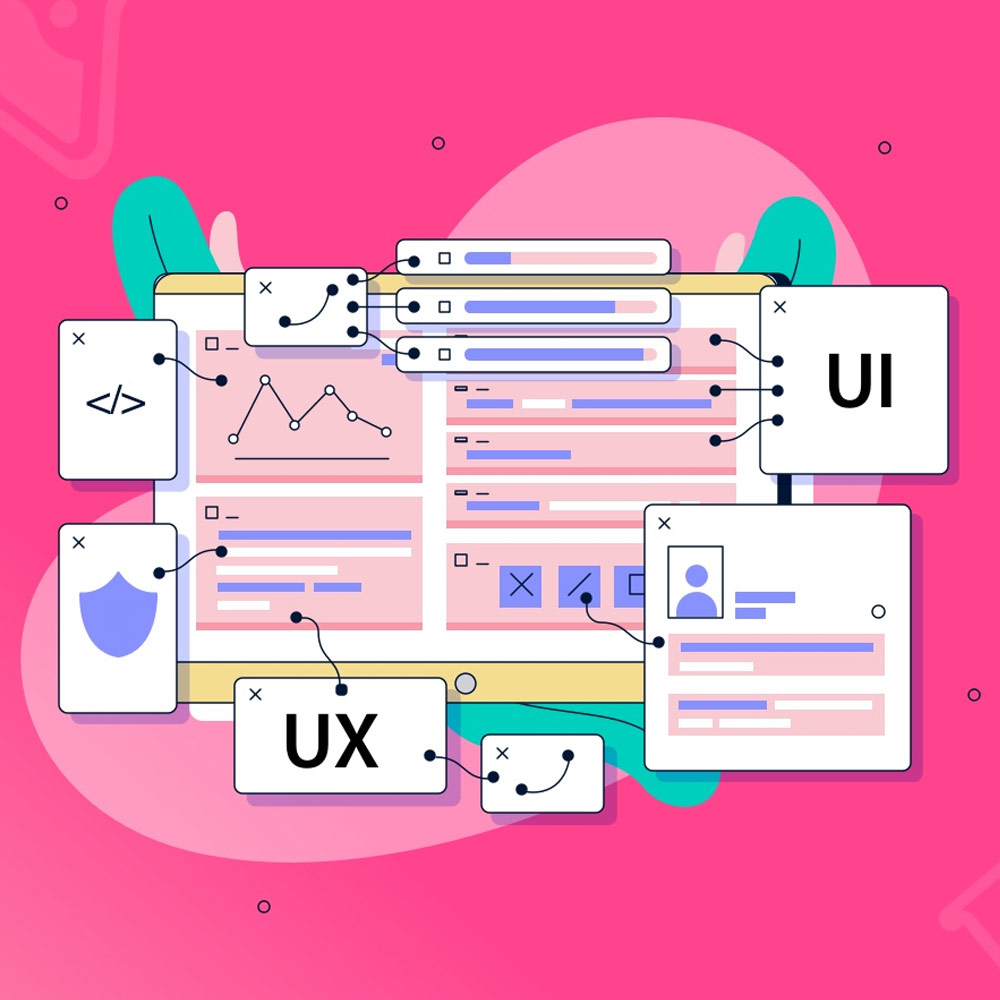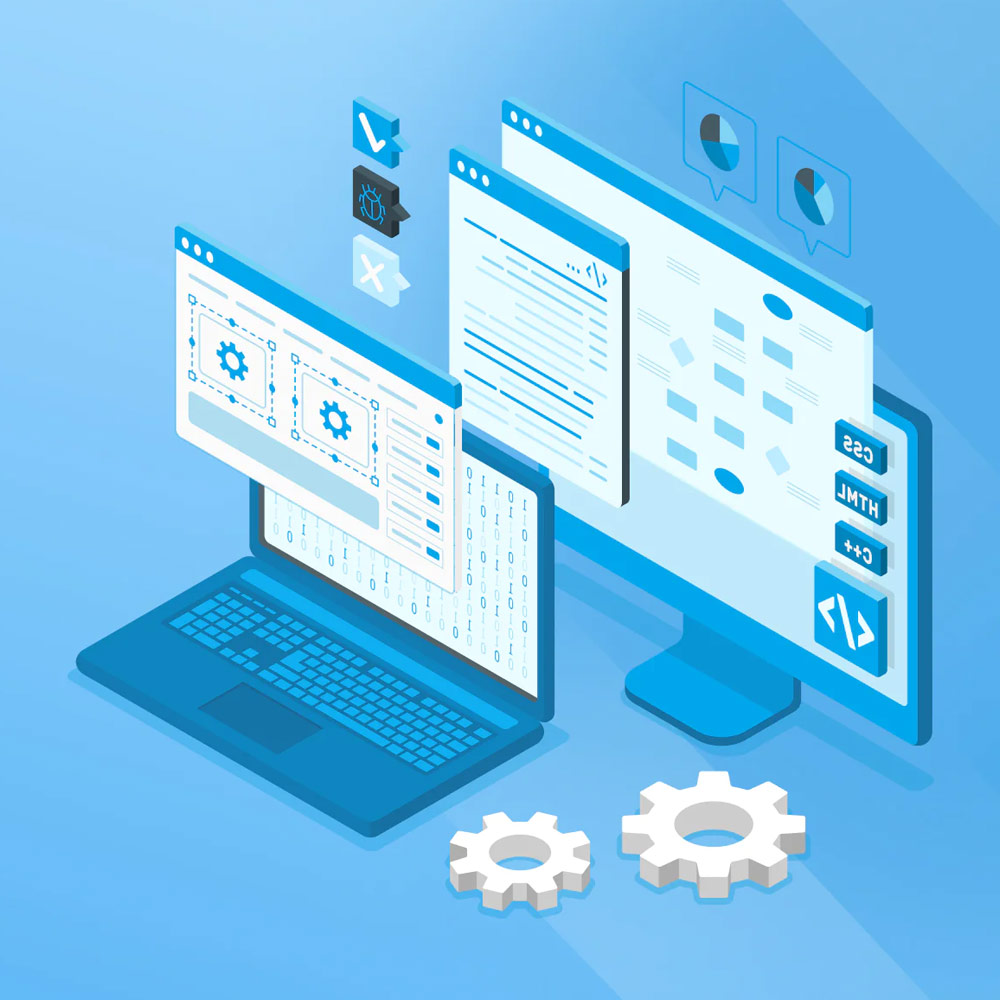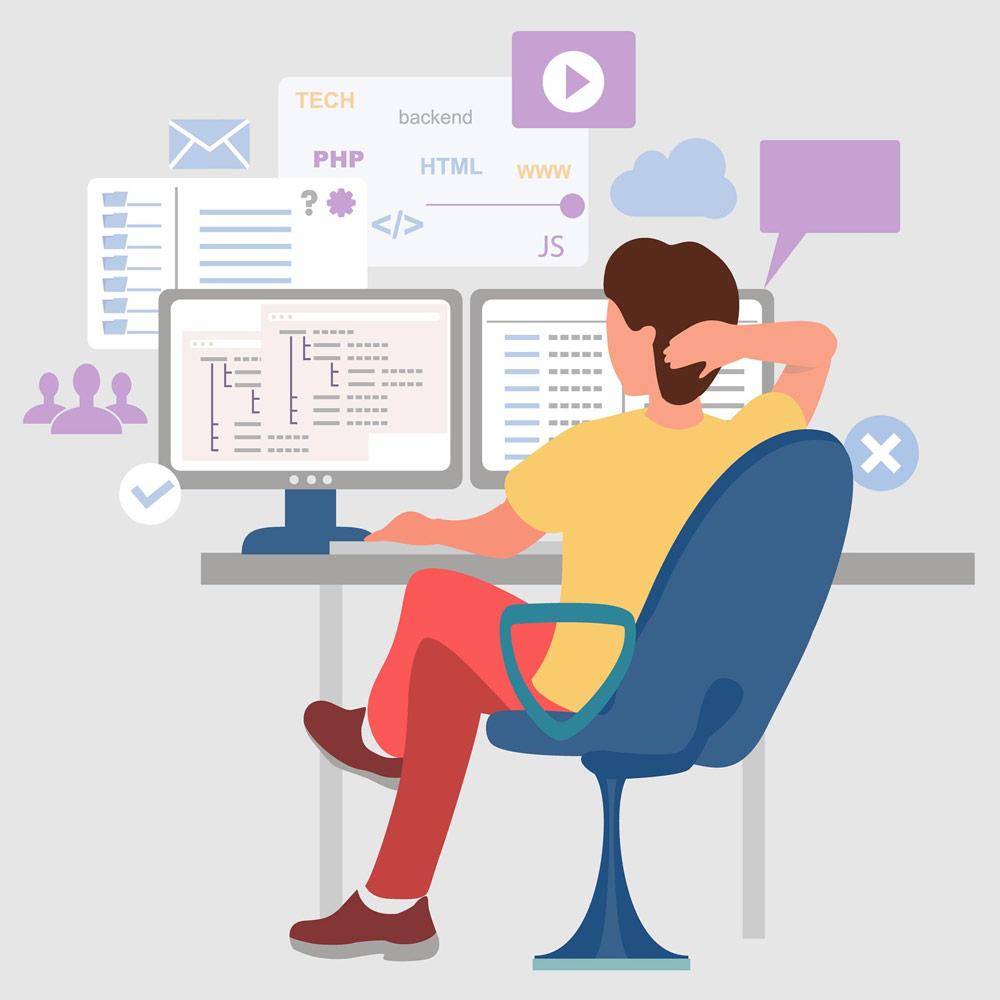
What Is Full-Stack Developer?
In the rapidly evolving world of technology, the role of a full-stack developer has gained significant importance. With the increasing demand for versatile professionals who can handle both front-end and back-end development, full-stack developers have become a crucial asset for companies. In this comprehensive guide, we will explore the definition of a full-stack developer, their responsibilities, required skills, advantages of full-stack development, how to become a full-stack developer, challenges and limitations, and the future of full-stack development in the tech industry.
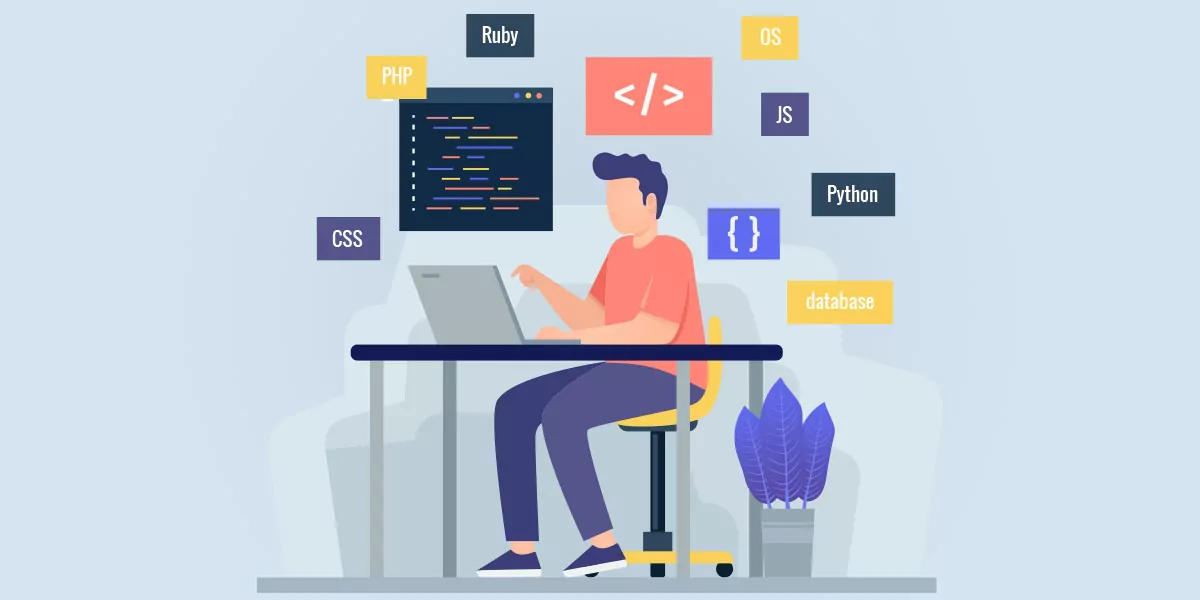
What Is Full-Stack Developer
What does a Full-Stack Developer do?
A full-stack developer is a professional who possesses the skills and knowledge to handle both front-end and back-end development tasks. They are proficient in working with various technologies, programming languages, and frameworks that are essential for building web applications. Full-stack developers are responsible for designing user interfaces, developing the back-end logic, creating and managing databases, and ensuring the smooth functioning of the entire application.
Definition of full-stack development
Full-stack development refers to the process of creating a web application from start to finish, encompassing both client-side and server-side development. It involves working on the front end, which deals with the user interface and user experience, and the back end, which handles the server, databases, and application logic.
Explanation of front-end and back-end development
Front-end development focuses on creating the visual elements and user interactions of a website or application. It involves working with HTML, CSS, and JavaScript to build responsive and user-friendly interfaces. Back-end development, on the other hand, deals with the server side of the application. It involves managing databases, implementing business logic, and handling data processing.
Overview of the responsibilities of a full-stack developer
As a full-stack developer, one needs to be proficient in various areas of development. Some of the key responsibilities include:
- Developing user-friendly and responsive front-end interfaces
- Designing and implementing the back-end architecture
- Creating and managing databases
- Integrating APIs and web services
- Ensuring cross-platform compatibility and performance optimization
- Collaborating with designers, developers, and stakeholders throughout the development process
- Troubleshooting and debugging issues in the application
Examples of projects a full-stack developer might work on
Full-stack developers can work on a wide range of projects, from small web applications to large-scale enterprise systems. Some examples include:
- E-commerce platforms with user registration, product catalogue, and payment integration
- Social media applications with user profiles, messaging, and content-sharing features
- Content management systems for creating and managing website content
- Online marketplaces with user authentication, product listings, and transaction management
- Web-based productivity tools like project management systems or collaborative document editors
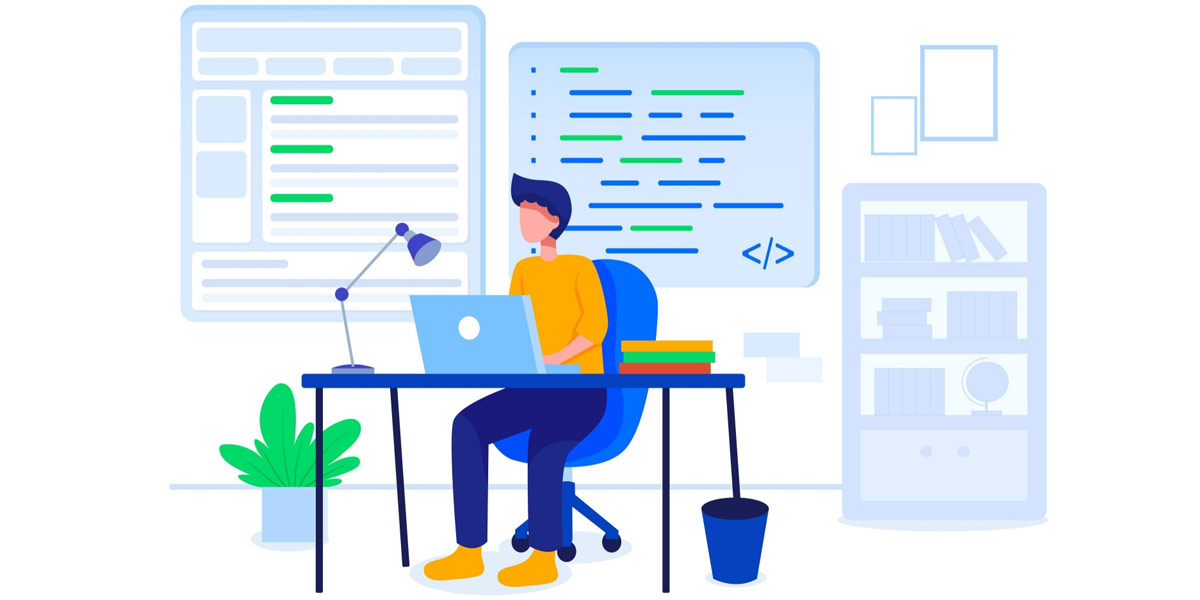
What does a Full-Stack Developer do?
Required Skills for Full-Stack Developers
To excel as a full-stack developer, one needs to possess a combination of technical skills, soft skills, and familiarity with various tools and technologies.
Technical skills required for a full-stack development
Front-end languages and frameworks (HTML, CSS, JavaScript)
Front-end development forms a crucial part of a full-stack developer’s skill set. Proficiency in HTML, CSS, and JavaScript is essential for building interactive and visually appealing user interfaces. Additionally, knowledge of popular front-end frameworks like React, Angular, or Vue.js can greatly enhance productivity and efficiency.
Back-end technologies and frameworks (Node.js, Ruby on Rails, etc.)
Back-end development involves working with server-side technologies and frameworks. Full-stack developers should be well-versed in at least one back-end technology such as Node.js, Python, PHP, or Ruby on Rails. These frameworks provide the necessary tools and libraries for building robust and scalable web applications.
Databases and query languages (SQL, NoSQL)
Understanding databases and query languages is crucial for storing and retrieving data in web applications. Knowledge of SQL (Structured Query Language) is essential for working with relational databases like MySQL or PostgreSQL, while familiarity with NoSQL databases like MongoDB or Firebase can be beneficial for handling non-relational data.
Version control systems (Git)
Version control systems like Git are essential tools for managing source code, collaborating with other developers, and keeping track of changes. Full-stack developers should be proficient in using Git and understand concepts like branches, commits, and pull requests.
Soft skills for full-stack developers
In addition to technical skills, full-stack developers should possess certain soft skills that enable them to work effectively in a team and deliver high-quality projects. Some essential soft skills include:
- Problem-solving and analytical thinking
- Effective communication and collaboration
- Time management and organizational skills
- Adaptability and willingness to learn new technologies
- Attention to detail and commitment to writing clean and maintainable code
Tools and technologies commonly used by full-stack developers
Full-stack developers often utilize a variety of tools and technologies to streamline their workflow and enhance productivity. Some commonly used tools and technologies include:
- Integrated Development Environments (IDEs) like Visual Studio Code, IntelliJ IDEA, or Sublime Text
- Package managers like npm (Node Package Manager) or Yarn for managing project dependencies
- Task runners/build tools like Grunt, Gulp, or Webpack for automating repetitive tasks
- Testing frameworks like Jest, Mocha, or Jasmine for ensuring code quality and reliability
- Containerization platforms like Docker for deploying applications in isolated environments
- Cloud platforms like AWS, Azure, or Google Cloud for hosting and managing web applications
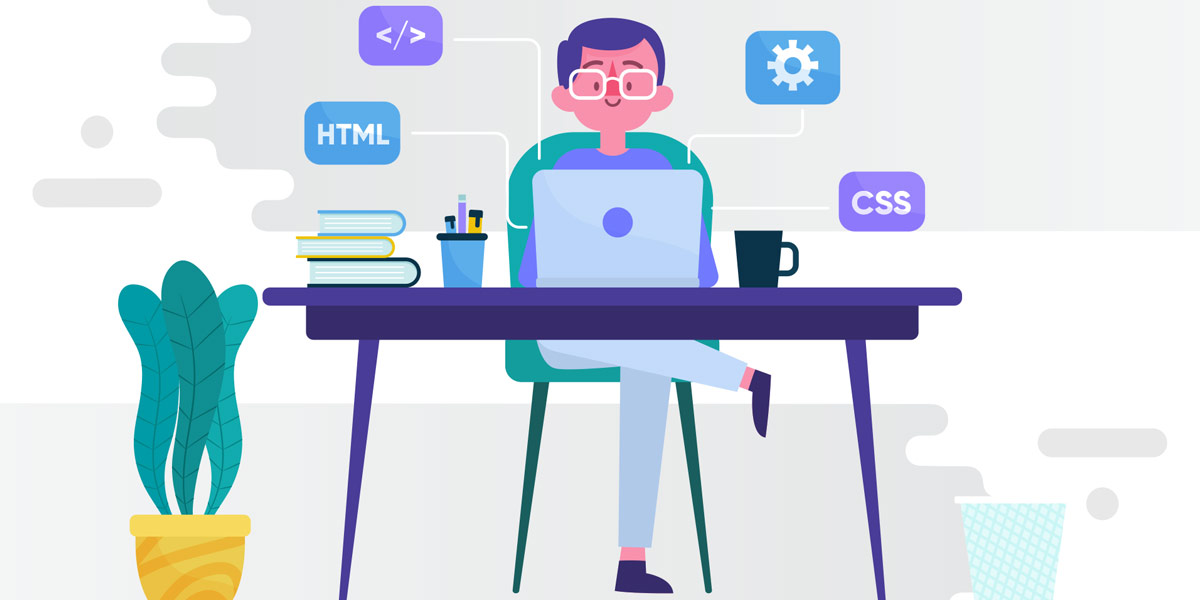
Required Skills for Full-Stack Developers
Advantages of Full-Stack Development
Full-stack development offers numerous advantages both for companies and individuals.
Benefits for companies
Cost-effectiveness
By having a full-stack developer who can handle both front-end and back-end tasks, companies can save on hiring multiple specialized developers. This can be particularly beneficial for startups and small businesses with limited resources.
Faster project delivery
Full-stack developers can work on all aspects of a project, allowing for quicker iterations and faster project delivery. They can seamlessly switch between front-end and back-end development, reducing dependencies and improving overall efficiency.
Flexibility and adaptability
Full-stack developers are versatile professionals who can adapt to different project requirements and technologies. They can easily switch between different programming languages, frameworks, and tools, making them valuable assets for companies working on diverse projects.
Benefits for individuals
Broader skill set and career opportunities
Being a full-stack developer equips individuals with a wide range of skills, making them adaptable to various job roles and industries. They can work on different projects, explore different technologies, and pursue diverse career paths.
Higher salaries and job security
Full-stack developers are in high demand, and their ability to handle multiple roles and responsibilities often translates into higher salaries and better job security. Companies value the versatility and expertise that full-stack developers bring to the table.
Holistic understanding of the development process
Full-stack developers gain a holistic understanding of the entire web development process, from the user interface to the server-side logic. This comprehensive knowledge allows them to communicate effectively with different team members and contribute to all aspects of a project.
Comparison with other development roles
While full-stack development offers numerous advantages, it is important to understand the differences between full-stack developers and other specialized development roles.
Full-stack developers vs. front-end developers primarily focus on creating user interfaces and optimizing the user experience. They work with HTML, CSS, and JavaScript to design visually appealing and interactive interfaces. Full-stack developers, on the other hand, possess additional skills in back-end development and can handle server-side tasks.
Full-stack developers vs. back-end developers specialize in server-side programming, database management, and handling business logic. They work with frameworks and technologies like Node.js, Python, or Ruby on Rails. While full-stack developers also have back-end skills, they are proficient in front-end development as well.
Full-stack developers vs. specialized developers, such as mobile app developers, data scientists, or DevOps engineers, focus on specific areas of expertise. While full-stack developers may know these specialized areas, their versatility allows them to work on different types of projects and contribute to various stages of development.
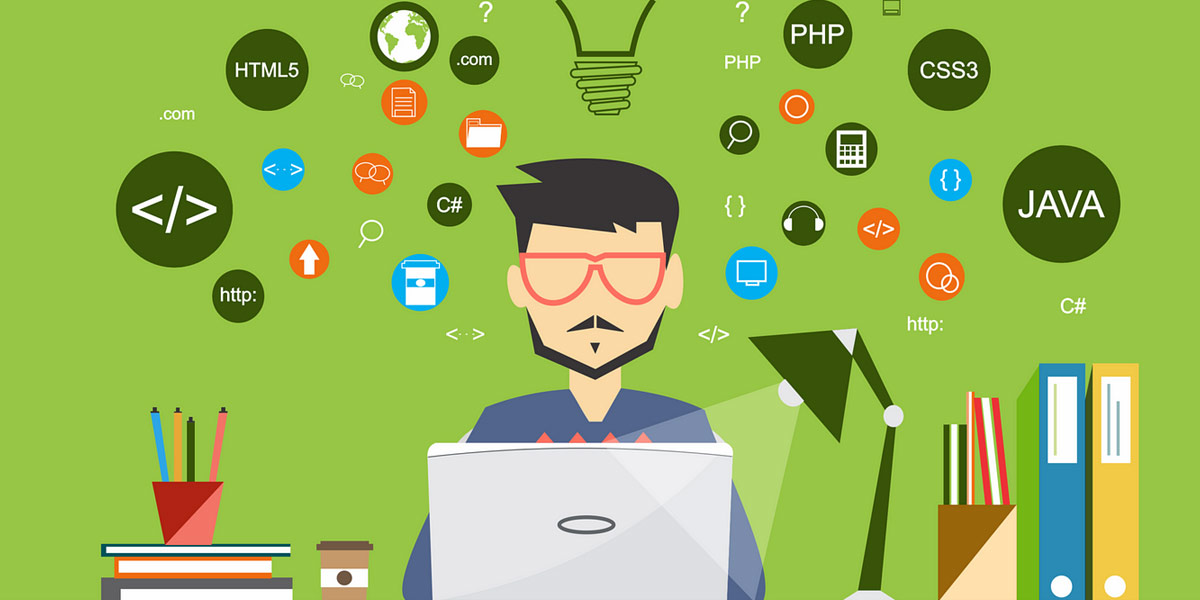
Advantages of Full-Stack Development
How to Become a Full-Stack Developer
Becoming a full-stack developer requires a combination of education, practical experience, and continuous learning.
Educational background
While formal education in computer science or a related field is beneficial, it is not always a prerequisite for becoming a full-stack developer. Many full-stack developers are self-taught or have acquired their skills through coding boot camps, online courses, or practical projects.
Key Steps to Become a full-stack developer
- Learn the fundamentals of front-end development: Start by gaining a strong foundation in HTML, CSS, and JavaScript. Familiarize yourself with responsive web design principles, CSS frameworks, and JavaScript libraries.
- Dive into back-end development: Learn back-end technology like Node.js, Python, PHP, or Ruby on Rails. Understand how to work with databases, build APIs, and handle server-side logic.
- Gain hands-on experience: Practice building web applications and working on projects that involve both front-end and back-end development. Build a portfolio showcasing your skills and projects.
- Explore additional tools and technologies: Familiarize yourself with popular frameworks, libraries, and tools used in full-stack development, such as React, Angular, or Vue.js for front-end development, or Docker and AWS for deployment.
- Continuously learn and stay updated: The tech industry is constantly evolving, and as a full-stack developer, it is important to stay updated with the latest trends, frameworks, and technologies. Engage in continuous learning through online tutorials, forums, and community events.
- Collaborate and work on real-world projects: Join open-source projects or collaborate with other developers to gain real-world experience and enhance your skills. Networking and working with experienced developers can provide valuable insights and opportunities.
Certifications and additional qualifications
While not mandatory, certifications can add credibility to your skillset and help you stand out in the job market. Some certifications that may be relevant for full-stack developers include:
- Certified Full-Stack Developer (CFSD) by Udemy
- Full-Stack Web Developer Nanodegree by Udacity
- AWS Certified Developer – Associate by Amazon Web Services
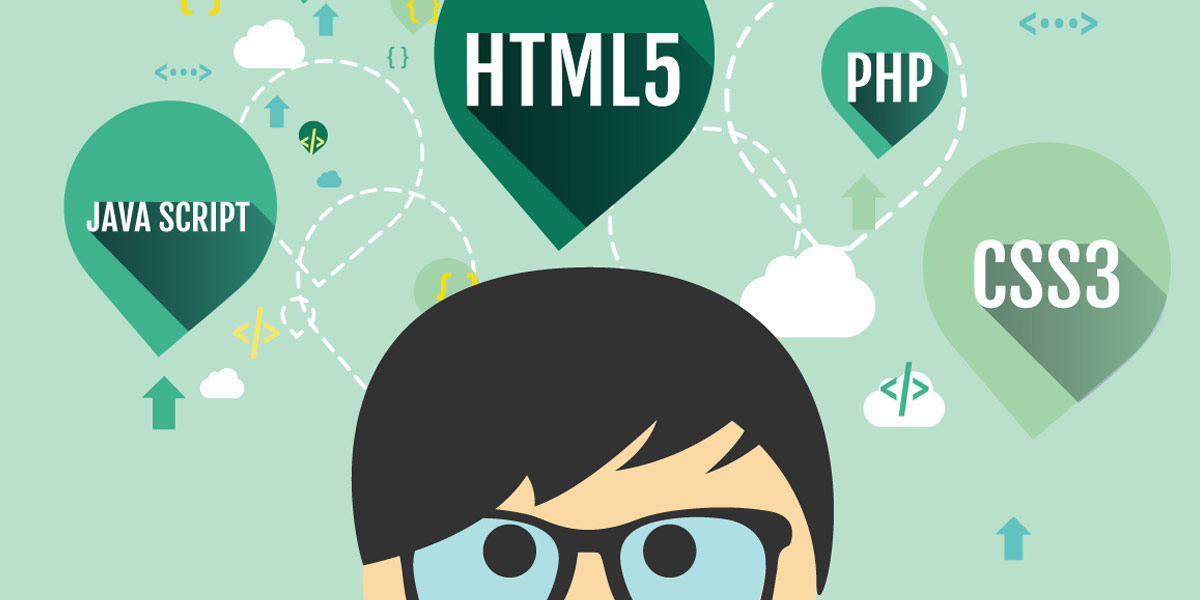
How to Become a Full-Stack Developer
Challenges and Limitations of Full-Stack Development
While full-stack development offers numerous advantages, it also comes with its own set of challenges and limitations.
Depth vs. breadth of knowledge
Full-stack developers are often considered “jacks of all trades” due to their versatile skill set. However, this breadth of knowledge can sometimes come at the cost of depth. Full-stack developers may not have the same level of expertise as specialized developers in specific areas.
Continuous learning and keeping up with technologies
The tech industry evolves rapidly, and full-stack developers need to continuously learn and adapt to new technologies, frameworks, and best practices. Staying updated can be time-consuming and challenging, but it is essential to maintain relevance and competitiveness.
Workload and time management
Handling both front-end and back-end tasks can be demanding and time-consuming. Full-stack developers need to effectively manage their workload, prioritize tasks, and ensure a balance between different aspects of development.
Complex projects and scalability
As projects grow in complexity and scale, it may become challenging for a single full-stack developer to handle all aspects of development. In such cases, collaboration with specialized developers or forming development teams may be necessary.
The Future of Full-Stack Development
The demand for full-stack developers is expected to continue growing in the future. As technology advances, companies are increasingly seeking professionals who can bridge the gap between front-end and back-end development. Additionally, the rise of cross-platform and hybrid app development further emphasizes the importance of versatile developers.
The future of full-stack development is likely to be influenced by emerging technologies such as artificial intelligence (AI), machine learning (ML), the Internet of Things (IoT), and cloud computing. Full-stack developers who embrace these technologies and continuously upgrade their skills will be well-positioned to thrive in the evolving tech landscape.
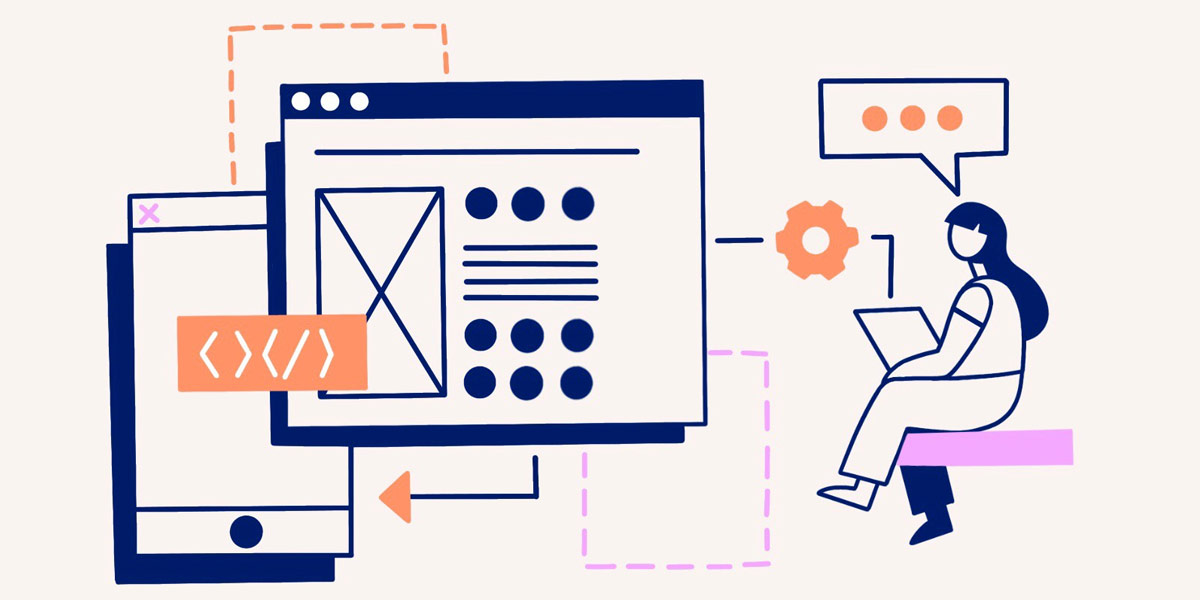
The Future of Full-Stack Development
Job Opportunities for Full-Stack Developers
Full-stack developers are in high demand across various industries. Their versatile skill set makes them valuable assets for companies of all sizes, from startups to large enterprises. Here are some job opportunities for full-stack developers:
- Full-Stack Developer: This is the primary role for full-stack developers, where they are responsible for developing and maintaining both front-end and back-end components of web applications. They work with different programming languages, frameworks, and databases to build robust and scalable solutions.
- Web Developer: Full-stack developers can also work specifically as web developers, focusing on creating and maintaining websites. They handle all aspects of web development, including designing user interfaces, implementing functionality, and ensuring responsive and intuitive user experiences.
- Software Engineer: Full-stack developers often possess the skills and knowledge required to work as software engineers. They contribute to the development of software applications, from conceptualization to deployment, and are involved in all stages of the software development life cycle.
- Technical Consultant: Full-stack developers with strong communication skills and a deep understanding of technology can work as technical consultants. They provide guidance to clients or internal teams on technology solutions, help with system architecture, and offer recommendations for efficient and effective development processes.
- Startup Entrepreneur: With their ability to work on various aspects of development, full-stack developers are well-suited to start their tech ventures. They can develop minimum viable products (MVPs), build prototypes, and bring their ideas to life.
- Freelancer: Many full-stack developers choose to work as freelancers, offering their services to clients on a project basis. Freelancing provides flexibility and the opportunity to work on diverse projects, allowing developers to showcase their skills and expand their network.
- Technical Lead/Manager: Full-stack developers with extensive experience and leadership qualities can progress into technical lead or management roles. They oversee development teams, provide guidance and mentorship, and ensure the successful delivery of projects.
Salary Potential for Full-Stack Developers
The salary potential for full-stack developers in the UK varies based on several factors, including location, experience, company size, and industry. Full-stack developers typically enjoy competitive salaries due to their versatile skill set and the high demand for their expertise in the tech industry. According to data from PayScale, the average salary for full-stack developers in the UK ranges from £35,000 to £65,000 per year. However, salaries can exceed this range for experienced professionals or those working in major tech hubs such as London or Manchester.
It’s important to note that salary should not be the sole factor when evaluating job opportunities. Other aspects like company culture, benefits, growth prospects, and work-life balance should also be considered. Some companies may offer additional perks like flexible working hours, remote work options, training and development programs, and attractive employee benefits packages, which can enhance overall job satisfaction and compensation package.
Additionally, it’s worth mentioning that salary negotiation is common in the UK job market, and candidates are encouraged to research industry standards, understand their worth based on experience and skills, and negotiate a fair salary during the hiring process. By demonstrating their value and showcasing their expertise, full-stack developers can potentially secure higher compensation packages.
Considering the dynamic nature of the tech industry, full-stack developers need to stay updated with emerging technologies, continuously improve their skills, and seek opportunities for professional growth. This can include attending industry conferences, participating in online courses, obtaining relevant certifications, and engaging in open-source projects or personal development initiatives. Such efforts not only enhance the chances of career advancement but can also contribute to salary growth and broader job prospects within the UK tech market.
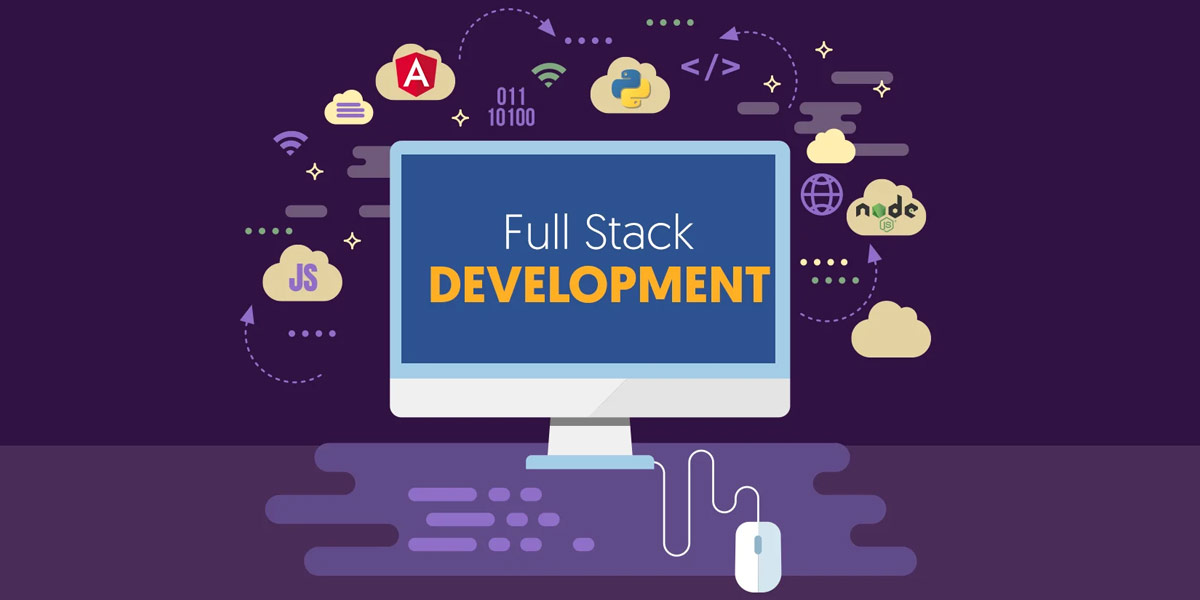
Salary Potential for Full-Stack Developers
Conclusion
Full-stack development offers a unique and rewarding career path for individuals who are passionate about both front-end and back-end development. By acquiring a diverse skill set, continuously learning and adapting to new technologies, and staying up to date with industry trends, full-stack developers can thrive in the ever-evolving tech landscape.
As companies increasingly seek versatile developers who can bridge the gap between different aspects of development, full-stack developers have excellent job prospects across various industries. Whether working for established companies, startups, or freelancers, they have the opportunity to make a significant impact on projects and contribute to the advancement of technology.
If you’re interested in pursuing a career as a full-stack developer, take the first steps by learning the fundamentals of front-end and back-end development, gaining practical experience through projects, and continuously expanding your knowledge and skills. With dedication and perseverance, you can build a successful career as a full-stack developer and contribute to the exciting world of technology.
FAQs
What is a Full-Stack Developer?
A Full-Stack Developer is a professional who possesses the skills and expertise to handle both the front-end and back-end development aspects of a web application. They are proficient in working with both client-side and server-side technologies, making them capable of handling the entire software development process.
What does a Full-Stack Developer do?
A Full Stack Developer is responsible for developing and implementing complete web applications or software projects. They work on both the front-end and back-end of applications, including designing user interfaces, writing server-side logic, developing APIs, and managing databases. Their role involves working with various programming languages, frameworks, and tools to ensure the smooth functioning and seamless integration of different components.
What are the skills required to become a Full-Stack Developer?
To become a Full-Stack Developer, one needs to acquire a diverse set of skills. This includes proficiency in front-end technologies such as HTML, CSS, and JavaScript, along with knowledge of popular front-end frameworks like React, Angular, or Vue.js. Additionally, expertise in back-end technologies such as Node.js, Python, or Ruby, and an understanding of server-side frameworks like Express, Django, or Ruby on Rails are essential. Familiarity with databases, version control systems, and deployment processes is also crucial for a Full-Stack Developer.
What are the roles and responsibilities of a Full-Stack Developer?
The roles and responsibilities of a Full-Stack Developer may vary depending on the organization and project requirements. Generally, they are responsible for designing and implementing user interfaces, developing server-side logic, writing and optimizing database queries, integrating external APIs, ensuring application security, and conducting thorough testing to identify and fix any bugs or issues. They collaborate with cross-functional teams, including designers, UX/UI specialists, and project managers, to deliver high-quality and fully functional web applications.
What is the difference between a Full-Stack Developer and a Software Developer?
While both Full-Stack Developers and Software Developers are involved in software development, there are some key differences between the two roles. Full-Stack Developers have expertise in both front-end and back-end development and can handle the entire software development process. On the other hand, Software Developers may specialize in specific areas, such as front-end development, back-end development, or mobile app development. Full-Stack Developers have a broader skill set and can work on multiple aspects of an application, whereas Software Developers may focus on specific technologies or programming languages.
What are the benefits of being a Full-Stack Developer?
Being a Full-Stack Developer offers several benefits. Firstly, they have a broader range of job opportunities, as they can work on various projects and industries. They also have the flexibility to switch between front-end and back-end development based on project requirements. Full-Stack Developers can understand the complete software development process, enabling them to contribute effectively to different stages of a project. Additionally, their diverse skill set makes them valuable team members, capable of collaborating with different stakeholders and resolving issues across different layers of an application.
What is the salary of a Full-Stack Developer?
The salary of a Full-Stack Developer can vary depending on factors such as location, experience, company size, and industry. In the United States, the average salary for Full-Stack Developers ranges from $75,000 to $120,000 per year, with higher salaries possible for experienced professionals or those working in major tech hubs. In the UK, the average salary for Full-Stack Developers ranges from £35,000 to £65,000 per year, with similar variations based on experience and location.
How to Become a Full-Stack Developer?
To become a Full-Stack Developer, one can follow several steps. It is essential to gain a strong foundation in programming languages such as HTML, CSS, and JavaScript. Familiarity with front-end frameworks like React, Angular, or Vue.js, as well as back-end technologies such as Node.js, Python, or Ruby, is crucial. Learning server-side frameworks, databases, version control systems, and deployment processes is also necessary. Continuous learning, hands-on practice, and building real-world projects can help in mastering the skills required to become a Full-Stack Developer.
What are the tools and technologies used by Full-Stack Developers?
Full-Stack Developers work with a wide range of tools and technologies. Some popular front-end tools include HTML, Cand SS preprocessors like Sass or Less, JavaScript libraries or frameworks like React, Angular, or Vue.js, and package managers like npm or Yarn. For back-end development, tools like Node.js, Python, Ruby, and frameworks such as Express, Django, or Ruby on Rails are commonly used. Database management systems like MySQL, MongoDB, or PostgreSQL, along with version control systems like Git, are also essential for Full-Stack Developers.
What are the challenges and limitations of Full-Stack Development?
Full-Stack Development comes with its own set of challenges and limitations. Firstly, mastering multiple technologies and keeping up with the constant changes in the tech industry can be demanding. Full-Stack Developers may face challenges in achieving deep expertise in specific areas compared to specialists focusing on a single domain. Additionally, handling both the front-end and back-end aspects of a project can be time-consuming and require efficient task management. Full-Stack Developers need to prioritize tasks effectively and seek support or collaborate with specialists when needed to overcome these challenges.

With over two decades of web design and development expertise, I craft bespoke WordPress solutions at FallingBrick, delivering visually striking, high-performing websites optimised for user experience and SEO.



